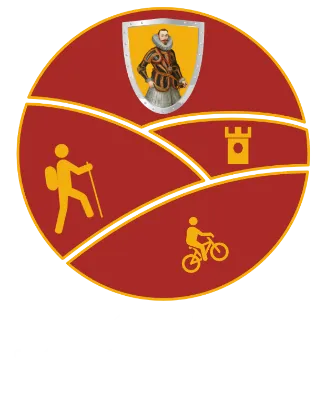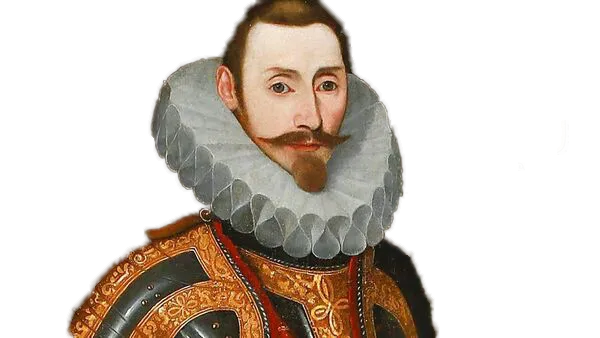Éamonn An Chnoic
A Rapparee also known as Ned of the Hill
Ned of the Hill
During the late 17th and early 18th centuries, a figure similar to Robin Hood wandered the hills of West Tipperary and East Limerick. Edmond O'Ryan, also known as Eamonn an Chnoic or Ned of the Hills, was part of a group of rapparees who supported the poor and dispossessed natives while causing trouble for the English planters. Various legends and stories exist about these men, and their actions have become part of the local folklore.
Edmond O'Ryan was born around 1670 in Atshanbohy near Upperchurch. His ancestors were once extensive landowners but lost their lands after the Desmond Rebellion, and now English planters owned them. The Ryans became tenants on the land. This situation was likely unacceptable to Edmond, whose ancestors were the O'Riain clan, Chiefs of Kilnaloangarty, and the famous O'Dwyers of Kilnamanagh.
Eamonn went to France for schooling and to become a priest. He returned to his home country because he did not want that life. A tax collector took a poor widow's only cow, so Eamonn tried to negotiate. The tax collector refused, and they fought, resulting in Eamonn killing him. Eamonn became a fugitive, hiding in the woods, while a reward for his capture grew.
In 1689, when King James arrived in Ireland, Eamonn joined his army along with many others, believing it to be the cause of Ireland. He participated in the Battle of the Boyne and Aughrim before joining Sarsfield's ranks to attack the Williamite siege train heading towards Limerick. According to tradition, Eamonn led the flying column that attacked William's train throughout its journey from Cashel to Ballyneety.
After the Treaty of Limerick, Sarsfield and his soldiers fought on the continent. Eamon, along with others, lived as outlaws in the woods, attacking the English with guerilla warfare. They robbed and plundered new landowners, evading constant searches by soldiers. They also helped the poor in a Robin Hood-like fashion.
Eamon has a rich tradition surrounding him. According to one story, he was short on money and encountered a lady while travelling. He demanded she "Stand and deliver," causing the lady to burst into tears as she gave him her purse containing £100. Eamon felt remorse and returned her purse, taking only a half crown to help him out. The lady was grateful and learned Eamon was an outlaw, promising to ask her husband to use his influence to obtain a pardon for him.
There is a story about a poor man who lived near Borrisoleigh. Eamon suggested that the man should inform the authorities about Eamon's whereabouts in exchange for a £5 reward. The poor man was hesitant at first, but eventually agreed. He told the military where they could find Eamon and received his reward. Eamon had planned his escape well and when the soldiers arrived, he surprised them and killed seven of them before escaping into the hills.
Reuben Lee was a soldier in Cromwell's army who joined the outlaws. He kept the money he stole for himself. He contacted authorities and offered to hand over Eamon in exchange for a pardon. They agreed and arranged a meeting. Eamon arrived accompanied by a man named Ryan. Ryan grew suspicious of Lee and told Eamon. Soldiers were coming, so Eamon shot Lee and they fled.
We know very little about Eamonn, apart from being an Officer in Sarsfield's Army and an outlaw in the hills. He was also a talented poet, known for his famous Irish poem "Eamonn a Chnoic" which describes the life of an outlaw. Another poem attributed to him is "Bean Dubh an Gleanna", a love song possibly written for Mary Leahy, who is said to have married Eamonn.
It is believed that Eamonn may have authored "Scan O'Duibhir a Ghleanna," a poem promoting patriotism and urging young men to fight for their land, following in the footsteps of John O'Dwyer of Kilnamanagh.
Eamon's death has a lot of history surrounding it. According the Cork Archealogical Journal, he was killed in Hollyford by a relative named O'Dwyer. Eamon had sought refuge with O'Dwyer, but while he was sleeping, O'Dwyer cut off his head with a hatchet. O'Dwyer took the head in a sack and planned on claiming the reward at Cashel. However, Eamon had been pardoned before his death. At Cashel, the head was placed on a spike over the jail gate. Sadie, Eamon's sister, later buried the head at Curraheen near Hollyford. A few years ago, a skull was found at this site and a memorial has been erected there. Eamon's friends had taken his body from where O'Dwyer had dumped it and buried it in Doon graveyard.

© 2023 In Tipperary, All Rights Reserved.
Web Design by Pixelweb Design

